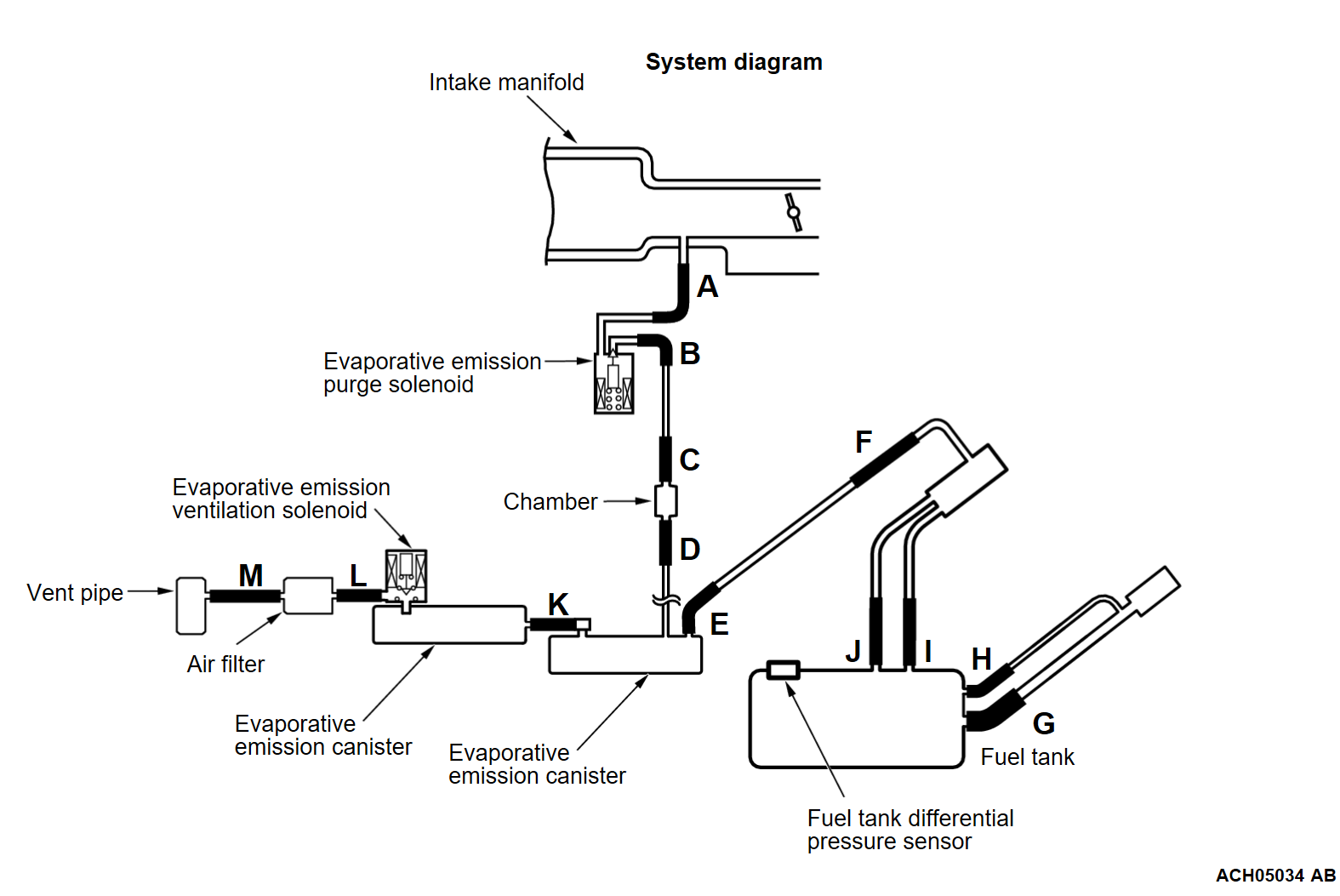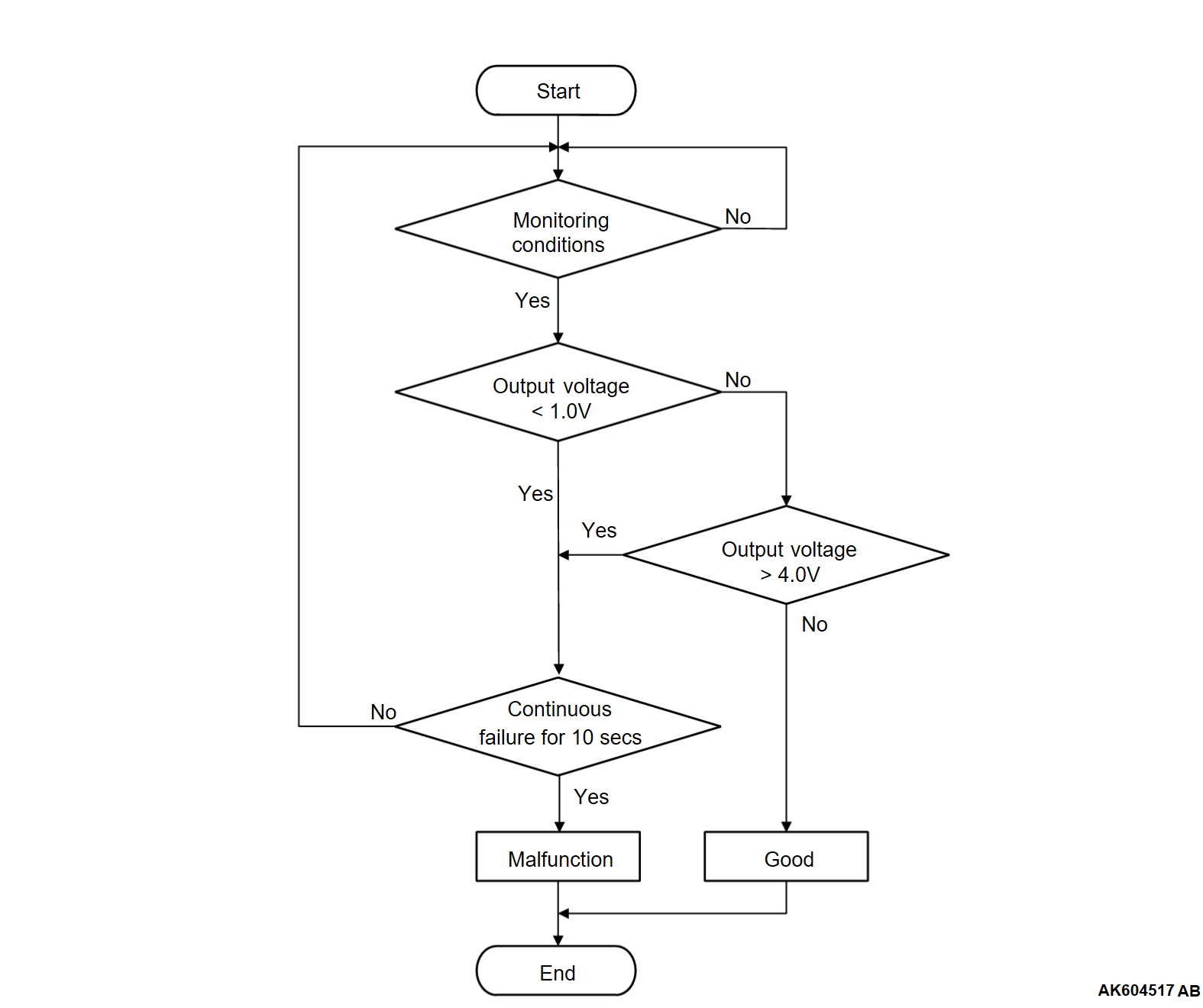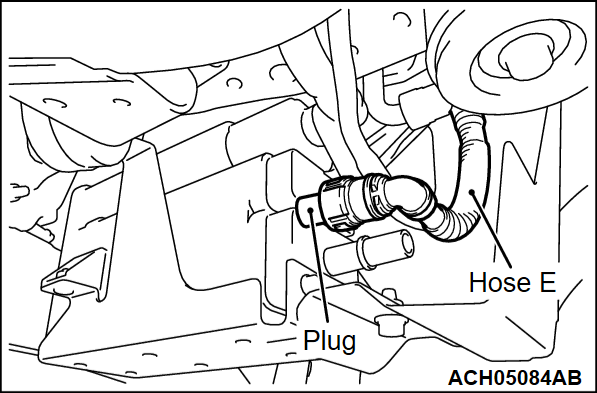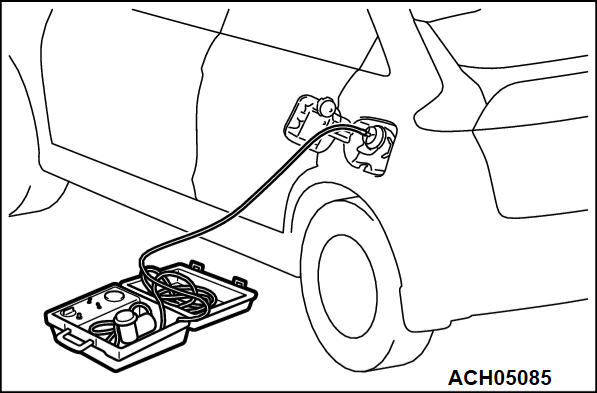DTC P0450: Evaporative Emission Control System Pressure Sensor Malfunction
CIRCUIT OPERATION
- The ECM terminal FPR5 supplies a 5 volts reference signal to the fuel tank differential pressure sensor. The fuel tank differential pressure sensor is grounded through the ECM terminal FPRE.
- The fuel tank differential pressure sensor returns a voltage signal to the ECM terminal F/PR that is proportional to the pressure in the fuel tank.
TECHNICAL DESCRIPTION
- The ECM monitors the fuel tank differential pressure sensor output voltage.
- The ECM determines whether the fuel tank differential pressure sensor signal voltage is within normal operating parameters.
DESCRIPTIONS OF MONITOR METHODS
Compare evaporative emission purge solenoid status with fuel tank differential pressure sensor output voltage.
MONITOR EXECUTION
- Continuous
MONITOR EXECUTION CONDITIONS (Other monitor and Sensor)
Other Monitor (There is no temporary DTC set in memory for the item monitored below)
- Evaporative emission purge solenoid monitor
- Evaporative emission ventilation solenoid monitor
- Fuel tank temperature sensor monitor
- Fuel level sensor monitor
Sensor (The sensors below are determined to be normal)
- Mass airflow sensor
- Barometric pressure sensor
- Intake air temperature sensor 1
- Engine coolant temperature sensor
- Accelerator pedal position sensor
Check Condition
- Intake air temperature is higher than 5°C (41°F).
Judgment Criterion
- When the evaporative emission purge solenoid is off, the fuel differential pressure sensor output voltage remains 1.0 volt or less for 10 seconds.
Check Conditions <Up to 19 Model year>
- Intake air temperature is between 5°C (41°F) and 45°C (113°F).
- Enough purge flow to depressurize the fuel tank.
- There is not much evaporation in the fuel tank.
Judgment Criterion <Up to 19 Model year>
- When the evaporative emission purge solenoid valve is fully operational (100 percent ratio), the fuel differential pressure sensor output voltage remains 4.0 volts or more for 10 seconds.
Check Conditions <From 20 Model year>
- Intake air temperature is higher than 5°C (41°F)
- Engine coolant temperature is higher than 20°C (67°F).
- Barometric pressure is higher than 76 kPa (22.4 in.Hg).
- Fuel tank temperature is less than 36°C (97°F).
- Fuel tank differential pressure sensor output voltage is more than 4.0 volts when the monitor is started.
- Amount of remaining fuel is 15 - 85 percent of capacity.
- Enough purge flow to depressurize the fuel tank.
- There is not much evaporation in the fuel tank.
- Once per driving cycle.
Judgment Criterion <From 20 Model year>
- The fuel tank differential pressure sensor output voltage is more than 4.0 volts [5.0 kPa (1.5 in.Hg)] after the evaporative emission purge solenoid valve has been driven when the fuel tank and vapor line were closed.
FAIL-SAFE AND BACKUP FUNCTION
- None.
OBD-II DRIVE CYCLE PATTERN
TROUBLESHOOTING HINTS (The most likely causes for this code to be set are: )
- Fuel tank differential pressure sensor failed.
- Fuel tank differential pressure sensor circuit, harness damage or connector damage.
- ECM failed.
DIAGNOSIS
STEP 1. Using scan tool (M.U.T.-IIISE), check data list item 52: Fuel Tank Differential Pressure Sensor.
| caution | To prevent damage to scan tool (M.U.T.-IIISE), always turn the ignition switch to the "LOCK" (OFF) position before connecting or disconnecting scan tool (M.U.T.-IIISE). |
(2) Disconnect the hose E from the evaporative emission canister.
(3) Plug the disconnected end of hose E.
(4) Turn the ignition switch to the "ON" position.
(5) Remove the fuel cap.
(6) Set scan tool (M.U.T.-IIISE) to the data reading mode for item 52, Fuel Tank Differential Pressure Sensor.
- Output voltage should be between 1,500 to 3,500 millivolts.
(7) Connect the evaporative emission system pressure pump (Miller number 6872A) to the fuel tank filler tube by using fuel tank adapter (MLR-8382) and pressurize the fuel tank.
- The fuel tank pressure reading should increase.
(8) Turn the ignition switch to the "LOCK" (OFF) position.
(9) Remove the evaporative emission system pressure pump (Miller number 6872A) and the fuel tank adapter (MLR-8382), and reinstall the fuel cap.
(10) Connect hose E to the evaporative emission canister.
Is the sensor operating properly?
STEP 2. Measure the sensor supply voltage at fuel tank differential pressure sensor harness side connector.
(1) Disconnect the fuel tank differential pressure sensor connector and measure at the harness side.
(2) Turn the ignition switch to the "ON" position.
(3) Measure the voltage between terminal FPR5 line and ground.
- Voltage should be between 4.9 and 5.1 volts.
(4) Turn the ignition switch to the "LOCK" (OFF) position.
Is the measured voltage between 4.9 and 5.1 volts?
STEP 3. Check of harness damage in FPR5 line between fuel tank differential pressure sensor connector and ECM connector.
STEP 4. Check the continuity at fuel tank differential pressure sensor harness side connector.
(1) Disconnect the fuel tank differential pressure sensor connector and measure at the harness side.
(2) Check for the continuity between terminal FPRE line and ground.
- Continuity (2 ohms or less).
Does continuity exist?
STEP 5. Check of harness damage in FPRE line between fuel tank differential pressure sensor connector and ECM connector.
STEP 6. Check of harness damage in F/PR line between fuel tank differential pressure sensor connector and ECM connector.
STEP 7. Replace the fuel tank differential pressure sensor.
(1) Replace the fuel tank differential pressure sensor.
(2) Carry out test drive with the drive cycle pattern. Refer to Diagnostic Function. OBD-II Drive Cycle - Pattern 7 <Up to 19 Model year> or Pattern 6 <From 20 Model year>  .
.
 .
.(3) Check the diagnostic trouble code (DTC).
Is DTC P0450 set?
 The inspection is complete.
The inspection is complete.STEP 8. Test the OBD-II drive cycle.
(1) Carry out a test drive with the drive cycle pattern. Refer to Diagnostic Function - OBD-II Drive Cycle - Pattern 7 <Up to 19 Model year> or Pattern 6 <From 20 Model year>  .
.
 .
.(2) Check the diagnostic trouble code (DTC).
Is DTC P0450 set?
 Repeat the troubleshooting.
Repeat the troubleshooting. The procedure is complete.
The procedure is complete.![[Previous]](../../../buttons/fprev.png)
![[Next]](../../../buttons/fnext.png)




